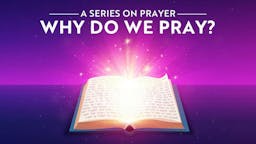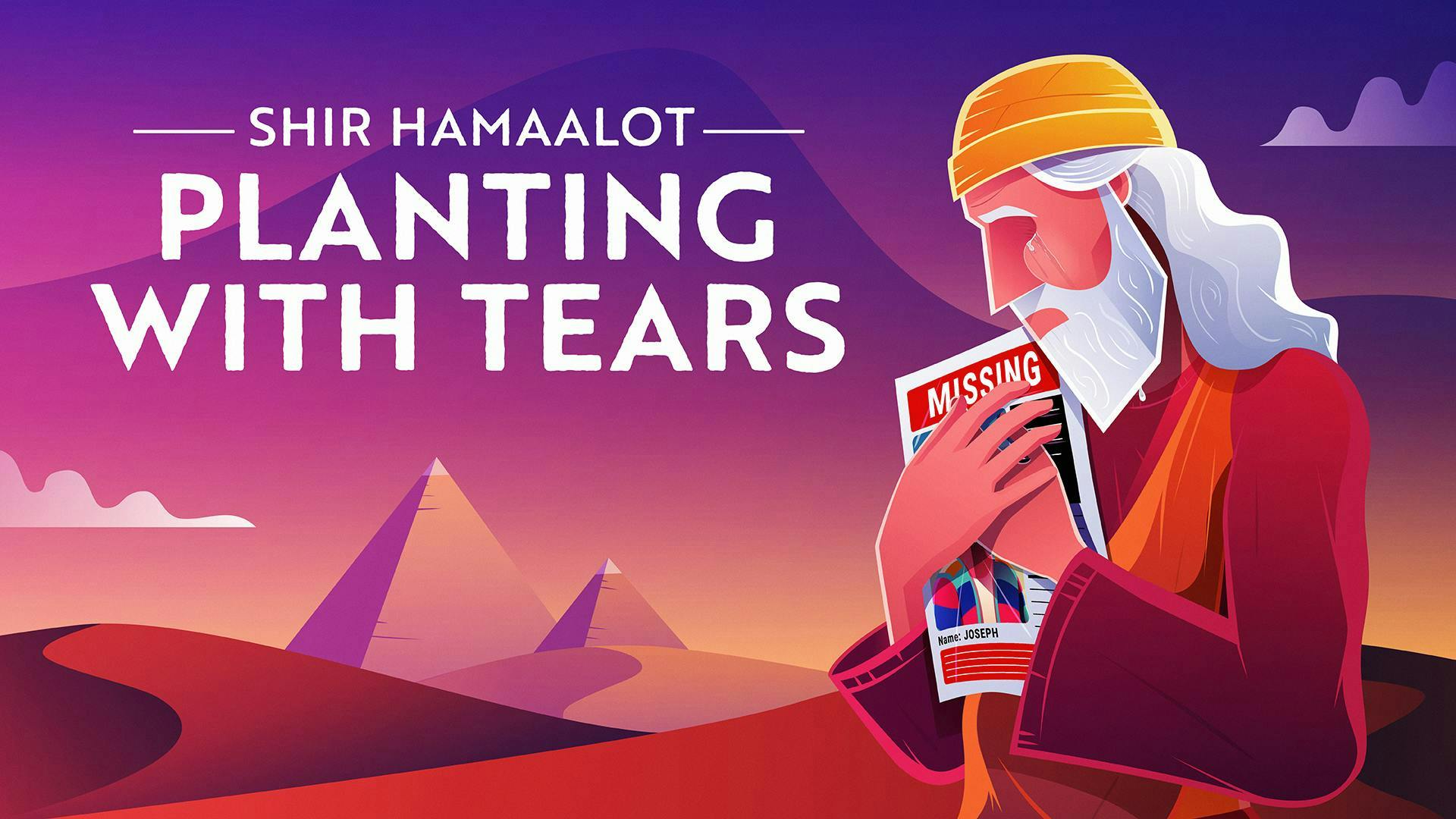How Do We Understand the Book of Tehillim (Psalms)?
This Book of Biblical Poetry is So Popular… But Do We Even Understand What it Means?
By Adina Blaustein | 8 February 2024 | 10 Minute Read
What Makes Tehillim So Difficult?
Many of us recite Tehillim (Psalms) frequently: when people are in need of recovery from sickness, when we hope for peace in Israel, or when we desire a specific positive outcome. You may even know entire chapters of Tehillim by heart from reciting them so frequently- something you probably can’t say for other books in Tanach! And Tehillim isn’t just popular as a go-to text to recite in times of need. Many chapters from Tehillim are in our siddur (prayerbook), featuring regularly as part of our liturgy.
So you might think that the reason Tehillim is so popular and occupies an important spot in our prayers is because it’s clear, accessible, and has easily relatable characters?
Well, not exactly.
Tehillim is famously difficult to understand - even when read in translation. Some factors that contribute to it’s difficulty are:
- Tehillim is written in biblical poetry. Poetry is hard to understand, even when read in translation.
- There are 150 chapters of Tehillim, a many open by listing various different authors. Many chapters have no author at all. It’s hard to connect to words without knowing who wrote them.
- To compound the problem raised earlier, many chapters lack historical context, which makes it difficult to figure out the events that motivated the feelings shared in each particular chapter.
Now, for people who recite Tehillim regularly, just reciting the words alone may feel special and powerful, and that can provide a sense of comfort. But what if we could go beyond just reading and reciting Tehillim, and gain a deeper understanding the words themselves, and the messages of the different chapters? That might help us gain appreciation for this book that is such a key part of our daily Jewish lives.
How to Find Meaning in Tehillim
One way to develop a greater appreciation for the words of Tehillim is by studying them. At Aleph Beta, a media company dedicated to helping people fall in love with Torah, our founder and lead scholar, Rabbi David Fohrman, has developed a methodology for finding the deeper meaning encoded in biblical texts. Rabbi Fohrman and the team at Aleph Beta focus on reading biblical texts closely, picking up on clues embedded int he text, and links to other chapters in Tanach.
Rabbi Fohrman researched different chapters of Tehillim and noticed something interesting: some chapters seem to deliberately hint to other, well-known events in Tanach. Let’s zoom in on one example of this analysis. By doing so, we’ll see that Tehillim, when studied with this lens of intertextuality, can actually become a very accessible and relatable text.
A Closer Look at Psalm 126
Every Shabbat we recite Psalm 126, shir hamaalot (song of ascent), before saying Birkat HaMazon (grace after meals). This beloved psalm does not clarify who the author is, but opens with the historical context: “when God restores the fortunes of Zion,” indicating that this is meant to describe the experience of those returning to Israel after years of bitter Babylonian exile after the destruction of the first Temple.
The psalm shares the joy and disbelief that those Jews will experience. But As you progress through the psalm, you might start to notice that the language is tugging at you to think of a famous story in Genesis.
Let me show you what I mean by highlighting two key metaphors used in the psalm:
- The first metaphor is introduced in the opening phrases of the Psalm. The Psalm opens with the following comparison: “A sign of Ascents, When the LORD restores the fortunes of Zion, we were like dreamers.”
Ok. The image of dreamers and dreams definitely FEELS familiar and recognizable in a few stories in Genesis, but this alone is not enough to pinpoint any particular character or story.
- The second metaphor that is used throughout Psalm 126 is the repeated imagery of wheat and harvest. The psalm describes what it will be like for those who have returned from captivity “ they who sow in tears shall reap with songs of joy.” And the imagery of harvesting and planting continues in the next verse, “Though he goes along weeping, carrying the seed-bag, he shall come back with songs of joy, carrying his sheaves.”
So we’ve seen that two key images the author of the Psalm wants us to think about are dreams and harvest. Now put those two metaphors together. Can you think of someone in Torah who dreams of a harvest - or wheat? Well…yes! One of Joseph’s dreams was about sheaves of wheat, and amazingly enough, it’s the ONLY other place in Tanach where the word alumot - אלומות (sheaves of wheat) is used. And not just that, it’s Joseph himself who then goes on to interpret Pharaoh’s dreams and provide a plan for how Egypt can leverage their abundant harvest.
But this connection raises a few questions. Why would the author of Psalm 126 want us to think about Joseph? What do Jews returning from Babylonian exile and Joseph have in common? And how does knowing that connection enrich our connection with this beloved psalm, shir hamaalot?
In this video, Rabbi Fohrman shows how the Jews returning from exile and the Joseph narrative are actually quite related, and share common themes. Joseph’s story of captivity, redemption, and reunion with his long-lost father provided a blueprint for the Jews returning from Babylonian exile. These Jews faced unimaginable new challenges, and strove, just as Joseph did, to see the hand of God in their redemption.
And for us, the folks reciting this chapter from Tehillim, when you have these themes in mind, the psalm can serve as an invitation for us to see God’s hand in our own lives, in our own generation, just as His hand was evident to Joseph and to the Jews returning from Babylonia.
More Meaning Behind What We Do Videos

The Meaning Of Sabbath Prayers
Video series • Part 1 of 3 • 1 hour, 6 min
The language the rabbis use to introduce the Sabbath Amidah prayers serves as a commentary on these biblical verses. These introductions show us how to read the verses and give us some insight into the meaning of the sabbath... join Rabbi Fohrman as he selves into the sage's words and uncovers The Meaning of the Sabbath Prayers.

Why It Is Important To Pray
Video • 13 min
Frantically flipping pages and mumbling words — for many this experience is familiar in our daily prayers. Our days are busy, difficult, and tiring. As a result, our prayers lose priority and, slowly, meaning. But it doesn’t have to be this way. There’s another way to think about prayer in our modern lives that is rich with meaning and inspiration. Join us as we explore the themes and rituals of prayer in our holy texts and rabbinic teachings and discover how they relate to our lives today — and never think about your daily prayer the same way again.
For more on prayer, see:
https://www.alephbeta.org/jewish-prayer
https://www.alephbeta.org/course/lecture/korach-can-we-influence-god
https://www.alephbeta.org/course/lecture/ki-tisa-moshes-benevolent-chutzpah

Does God Want Us to Change His Mind?
Video • 11 min
Can we cheat death? Sometimes God tells humans when He intends to kill, but that could be an invitation to try to convince God to do otherwise. Rabbi Fohrman explains two humorous but bizarre Midrashim recounting different interactions with the angel of death, and the possibility of thwarting its plans.
Meaning Behind What We Do Pages
What is Aleph Beta?
Aleph Beta is a unique kind of Torah library. Led by our founder, Rabbi David Fohrman, we are dedicated to high-level, textual Torah learning for adults that is intellectually and spiritually sophisticated, that enlivens your Jewish practice and helps you forge a deeper connection to God. Whether you’ve been learning in yeshiva for years or you’re just beginning your Torah journey, you’re sure to find something meaningful and surprising waiting for you here.
Browse our library of over 1,000 beautifully produced animated videos, podcasts, deep dive courses, and printable guides. Topics include the weekly parsha, Jewish holidays & fast days, laws & mitzvot, prayers, relationships, big philosophical ideas and more. Have something to say at the Shabbos table that will amaze your family and guests and bring deep meaning into their lives.


